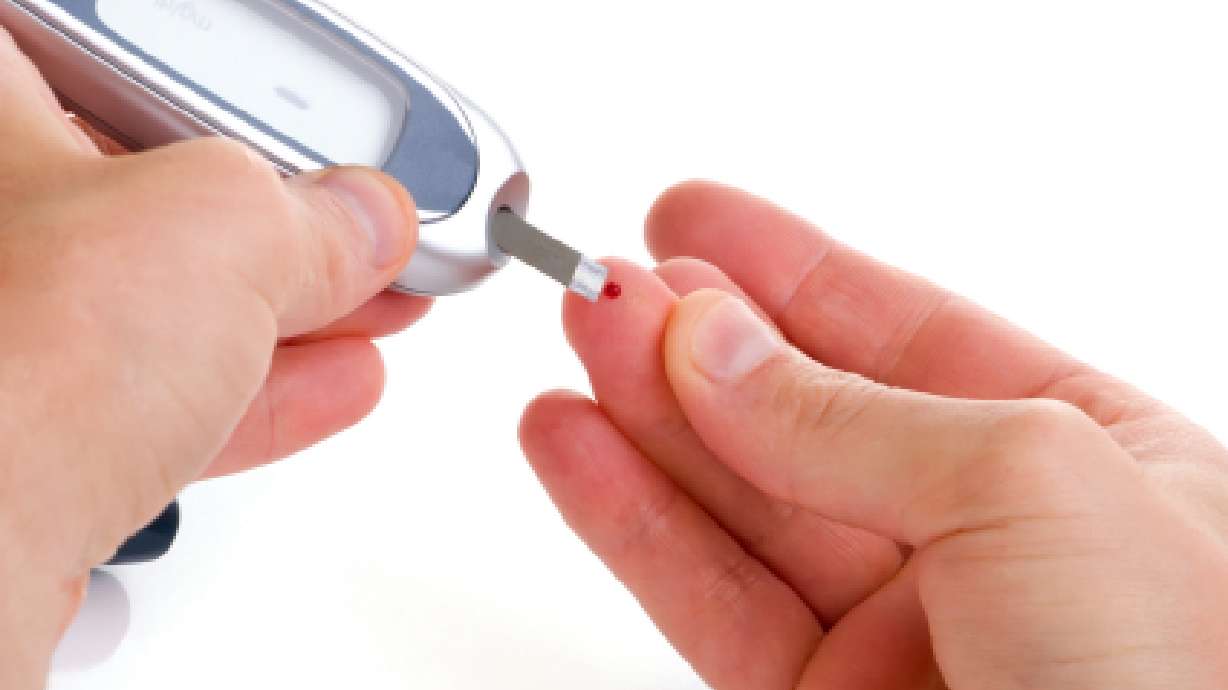Estimated read time: 4-5 minutes
This archived news story is available only for your personal, non-commercial use. Information in the story may be outdated or superseded by additional information. Reading or replaying the story in its archived form does not constitute a republication of the story.
In recent years, the incidence of diabetes among Americans has soared like blood sugar levels following a high-carb meal. According to the American Diabetes Association, 23.6 million people--8 percent of the population--in the U.S. now have diabetes, and that number is expected to keep rising. In the U.S., this disease is one of the leading causes of disability and death, with serious health consequences ranging from blindness to amputations to kidney failure, nerve damage, stroke, and pregnancy complications, among others.
Fortunately, the medical community's understanding of diabetes and how to treat it is advancing as well. Between modern medicine and healthy lifestyle changes, coping successfully with this all-too-common disease is more manageable than ever before. It all starts with understanding the problem.
Diabetes Defined
Sugar is rarely equated with good health, but one form of it--glucose--is absolutely vital for our bodies to function normally. During metabolism, food is broken down to yield this simple sugar, the body's main fuel source. The hormone insulin, produced in the pancreas, helps shuttle glucose from the bloodstream into cells, where it can be used for energy.
 Liz Brown is a health, nutrition and travel writer based in Portland, Oregon. She holds a B.S. degree in Nutrition and is co-author (with Chris Meletis, N.D.) of the book "Enhancing Fertility: A Couple's Guide to Natural Approaches " (Basic Health Publications, Inc., 2004). Brown is also a Spa magazine contributing editor.
Liz Brown is a health, nutrition and travel writer based in Portland, Oregon. She holds a B.S. degree in Nutrition and is co-author (with Chris Meletis, N.D.) of the book "Enhancing Fertility: A Couple's Guide to Natural Approaches " (Basic Health Publications, Inc., 2004). Brown is also a Spa magazine contributing editor.
In type 2 diabetes, formerly called adult-onset diabetes, the pancreas produces enough insulin but the body can't use it efficiently--this is called insulin resistance. Over time, insulin production decreases and glucose builds up in the bloodstream and urine instead of moving into cells to be used for fuel. Type 2 diabetes used to affect adults, primarily, but more and more young people are developing it these days, thanks in part to a more sedentary lifestyle and obesity.
A third type of the disease is gestational diabetes, which some women develop during the late stages of pregnancy. Pre-diabetes refers to a state of having higher-than-normal blood glucose levels that are still lower than levels associated with diabetes. Both gestational diabetes and pre-diabetes increase the risk of developing type 2 diabetes in the future.
Who's at Risk? Some people are genetically prone to the autoimmune response that leads to type 1 diabetes, according to Andrew Ahmann, M.D., M.S., Director of the Harold Schnitzer Diabetes Health Center at Oregon Health & Science University (OHSU). "For these people, the right trigger--certain viruses, for example--at the right time, or in the right environment, can 'turn on' the system," says Ahmann. "If your mother has or had this form of the disease, there's a less than 5 percent chance that you'll get it. If your father has or had it, there's a 5 to 10 percent chance of developing it." Type 1 diabetes is also more common among whites than non-whites.
A family history of diabetes increases the odds of developing type 2 diabetes, but older age, physical inactivity, obesity, previous gestational diabetes and certain ethnicities are also risk factors. Eighty percent or more of people with this form of the disease are overweight or obese. If one of your parents has or had type 2 diabetes, there's a 30 percent chance you'll develop it, says Ahmann. If both of your parents have or had it, the odds increase to greater than 60 percent.
If you or someone you know has diabetes, don't despair. Doctors are learning more and more about the disease and how to cope with it effectively. Read about strategies for managing diabetes and discover how other members are keeping this all-too-common health issue from limiting their lives.
Reprinted with permission from myRegence.com








